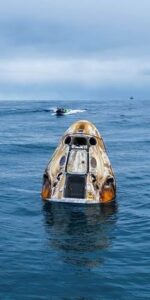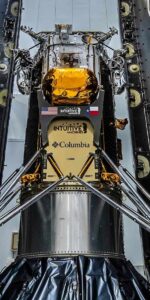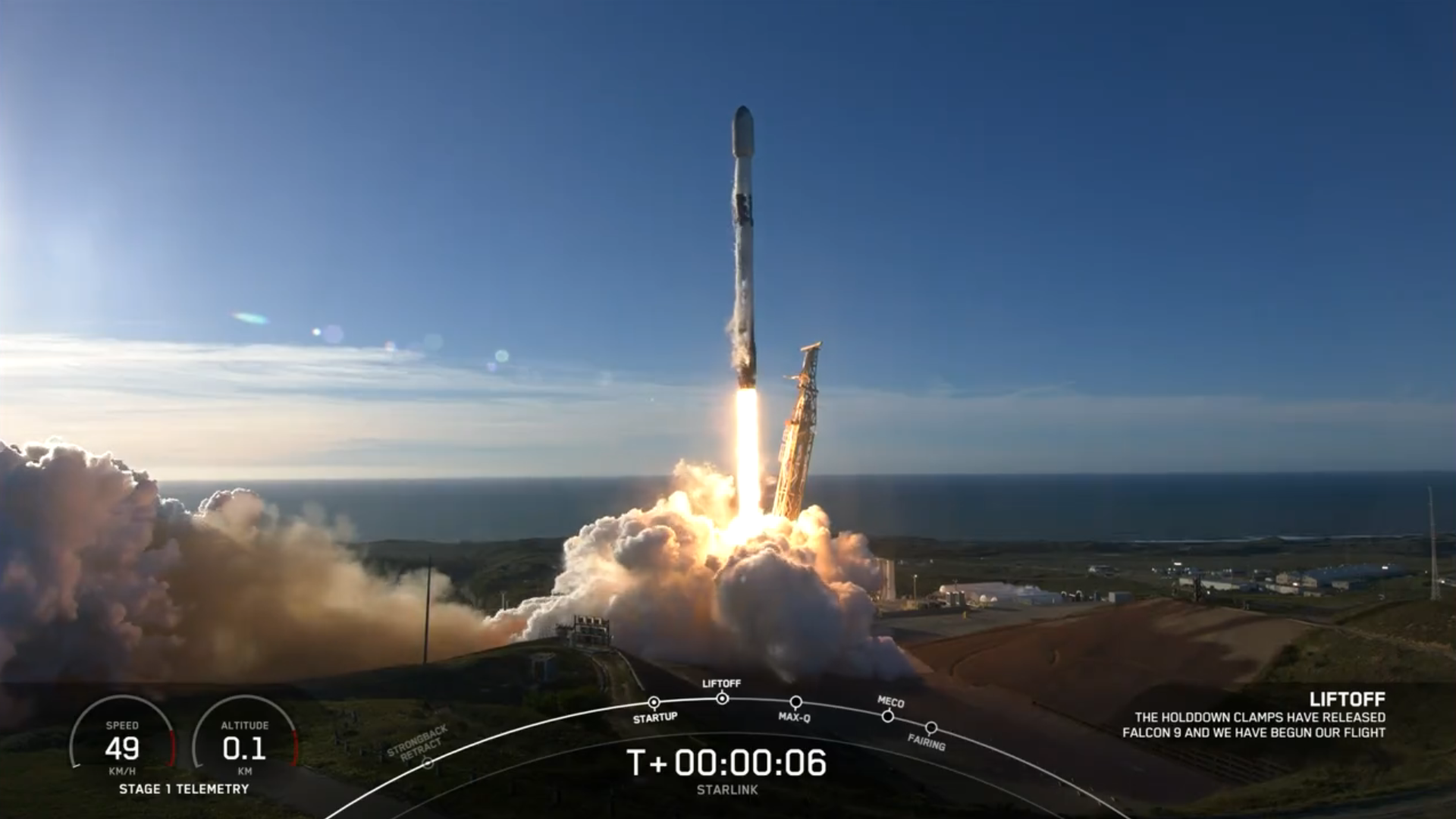
SpaceX successfully executed its 65th Falcon 9 mission out of Vandenberg Space Force Base, Calif., and its fifth from the mountain-ringed launch site of 2024 alone, with Friday’s rousing 4:34 p.m. PST rise of a veteran booster from Space Launch Complex (SLC)-4E. Tonight’s pre-sunset launch with a stack of 22 Starlink internet communications satellites came after two back-to-back days of delay caused by poor weather conditions.
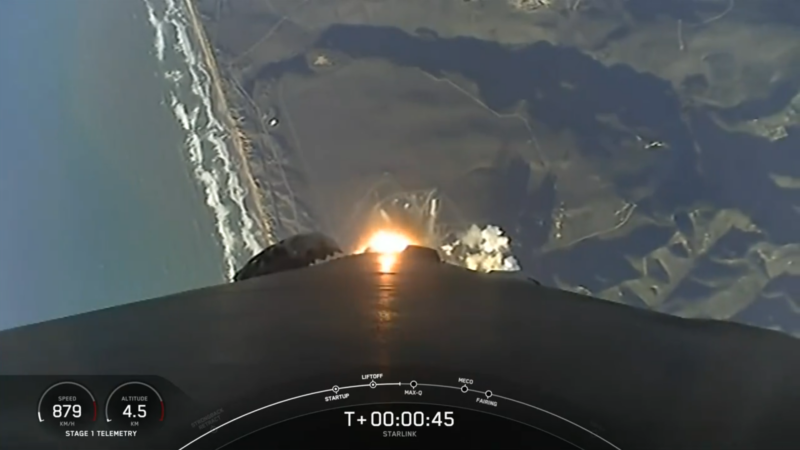
Flying tonight’s mission was the booster tailnumbered B1071, a dedicated “Vandenberg Falcon” which was wrapping up her 14th launch in exactly two years. First flown in early February 2022, her opening pair of flights delivered two highly secretive payloads to orbit for the National Reconnaissance Office (NRO), followed by a pair of multi-customer Transporter missions, Germany’s SARah-1 radar-imaging surveillance satellite, seven Starlink missions—totaling more than 250 flat-packed satellites—and the NASA-led Surface Water and Ocean Topography (SWOT) mission to investigate surface-water altitudes at centimeter-levels of precision.
Of note, her fifth flight in October 2022 set a new record jointly with the launch of Dragon Endurance and Crew-5 of just seven hours and ten minutes between pairs of Falcon 9 missions. That record has since been twice-broken, firstly in March of 2023 and more recently in the final days of December. B1071 was also responsible for executing SpaceX’s 200th fully successful landing of a first-stage booster.
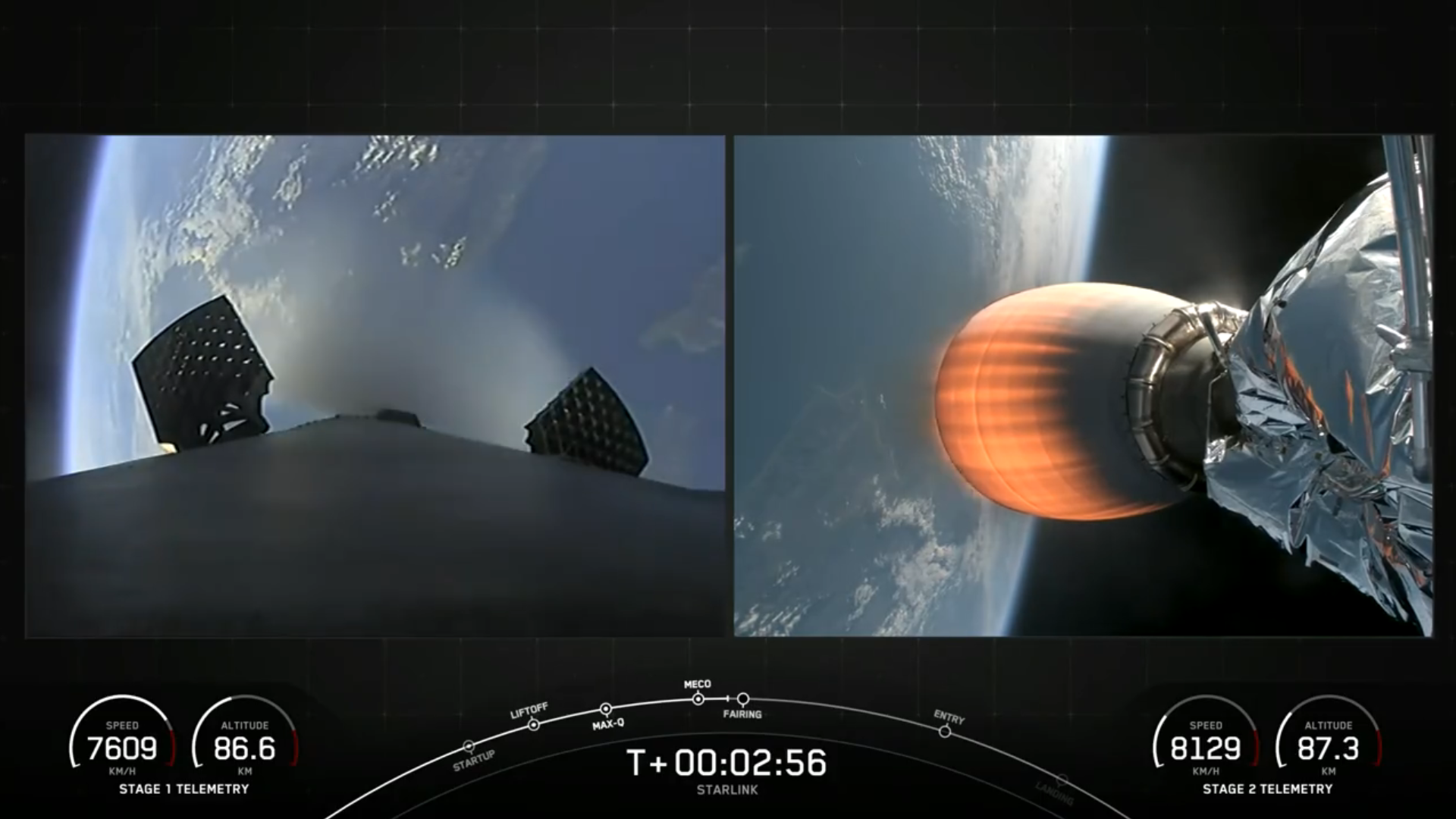
In readiness for launch, the West Coast-based Autonomous Spaceport Drone Ship (ASDS), “Of Course I Still Love You”, put to sea out of Port of Long Beach on the afternoon of 1 February, aiming for a recovery spot some 400 miles (640 kilometres) offshore in the Pacific Ocean. But as the recently launched Plankton, Aerosol, Cloud, Ocean Ecosystem (PACE) mission from the East Coast fell foul to multiple days of weather-induced delay, so too did this flight from the West Coast.
SpaceX characteristically its opening Vandenberg mission of February in short order, initially targeting a 9:37 p.m. PST liftoff on Tuesday. Propellant loading of the Falcon 9 with densified liquid oxygen and a highly refined form of rocket-grade kerosene (known as “RP-1”) got briskly underway on schedule at T-35 minutes, despite an ominous weather forecast predicting only 30-percent odds of acceptability at T-0.
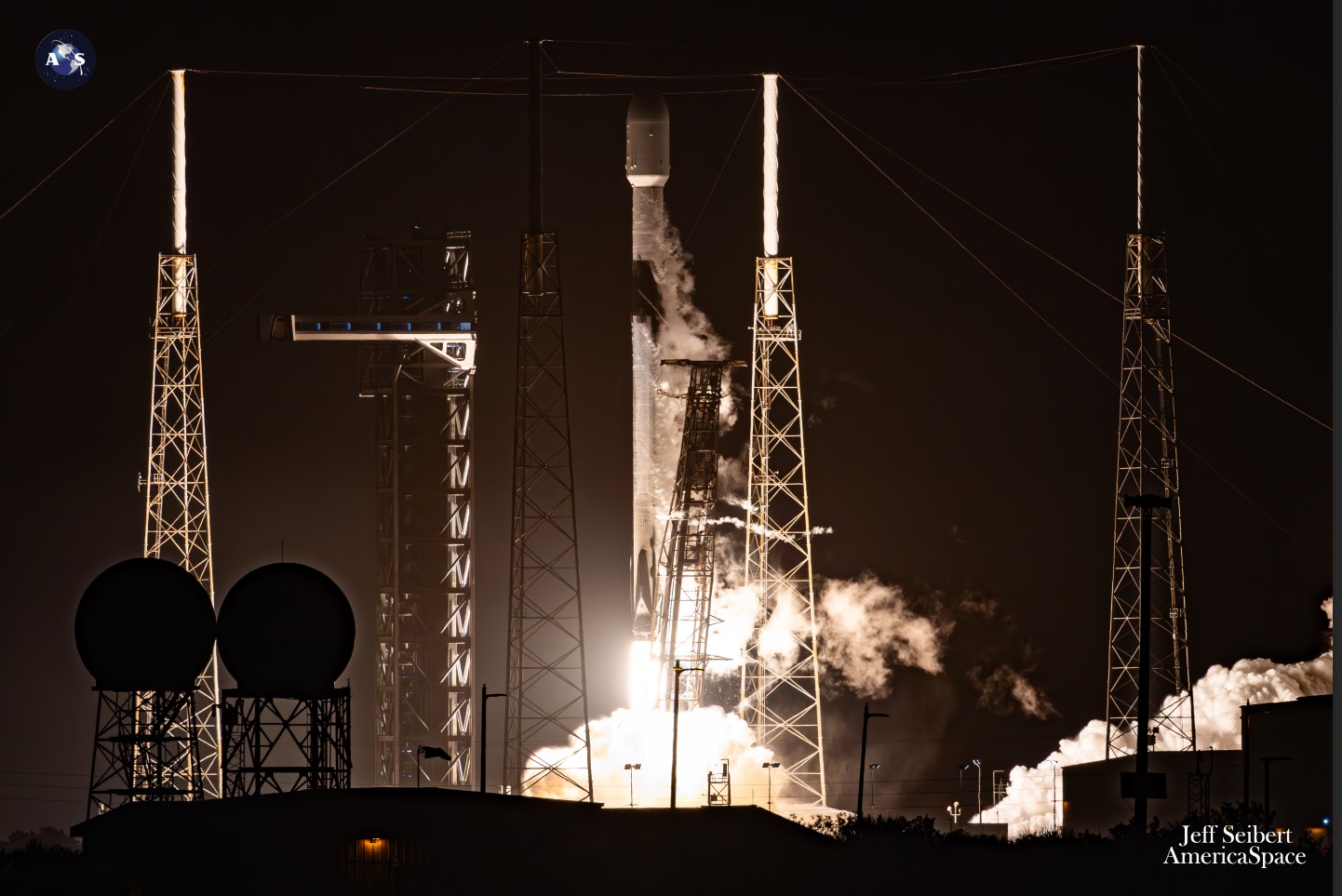
Clocks passed “Startup” at T-1 minute, when B1071’s flight computers assumed control, but an automatic halt was called at T-43 seconds and the countdown was held for several minutes before the attempt was scrubbed. “Next opportunity is no earlier than 7 February, pending weather conditions,” the Hawthorne, Calif.-headquartered organization tweeted on X, revealing on its website that the next available range of T-0 options began at 5:17 p.m. PST Wednesday, just on the cusp of sunset.
As circumstances transpired, teams opted to forego both Wednesday and Thursday, due to the poor outlook, with 20-percent weather favorability and excessive cloud cover. But Friday proved decidedly charmed, as conditions sprang to 80-percent favorable and propellant loading got underway—for the third time this week—at T-35 minutes, targeting an opening launch attempt at 4:34 p.m. PST.
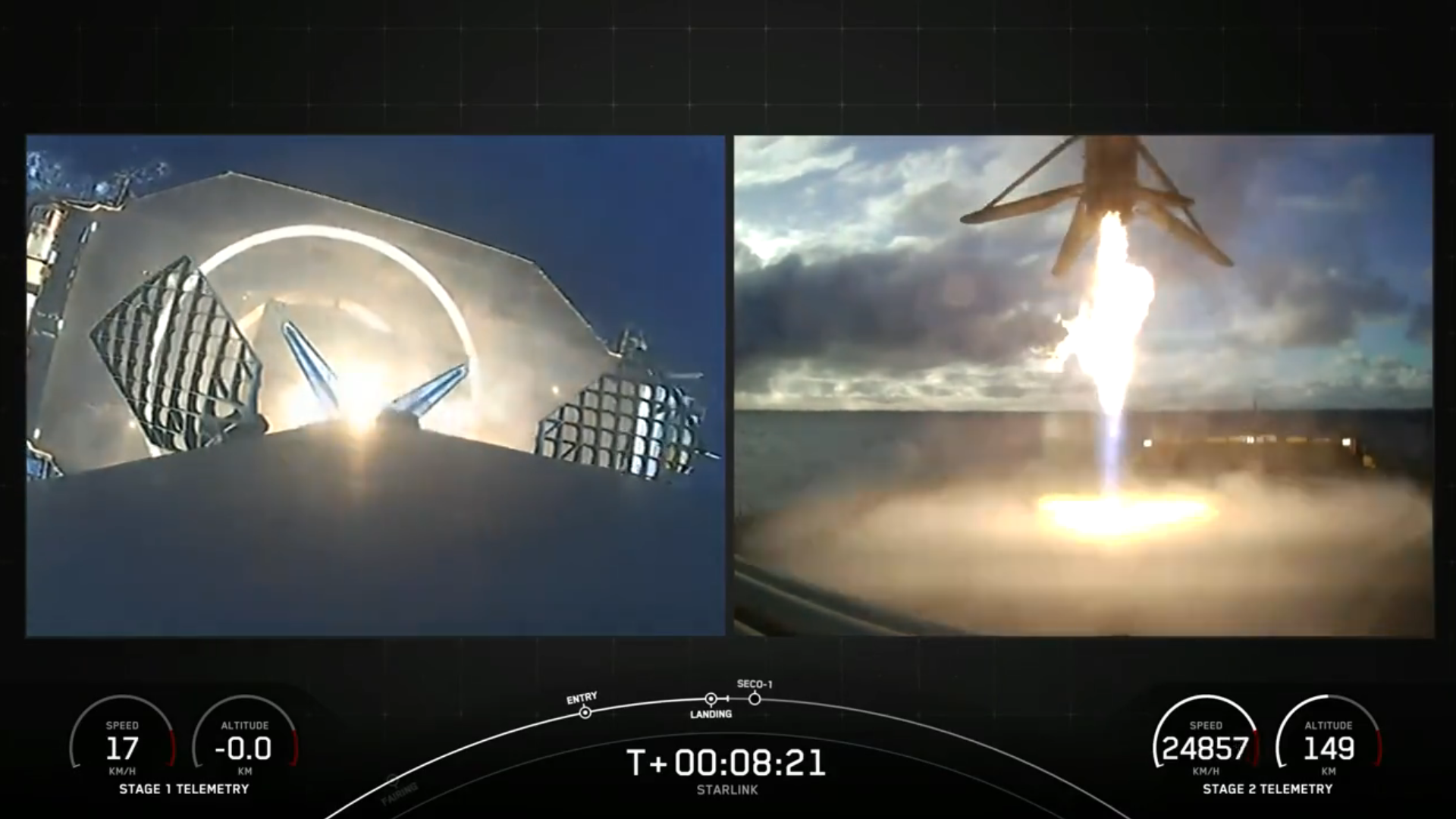
Trailing a glowing tongue of flame, B1071 sprang aloft to kick off her 14th mission in 24 months, an average of a flight every 7.5 weeks. “Over its 14 missions, this booster has delivered over 134 metric tons to space,” SpaceX tweeted, “including 279 Starlink satellites that help provide internet connectivity from almost everywhere on Earth.”
Separating from the stack at 2.5 minutes into ascent, B1071 pirouetted to a smooth, on-point touchdown on the expansive deck of OCISLY, as the second stage ignited for a six-minute “burn” to deliver the 22 Starlinks—totaling 38,800 pounds (17,600 kilograms)—into low-Earth orbit. Deployment was expected about 62 minutes after liftoff, bringing to more than 1,300 the total number of Starlinks launched from Vandenberg on 35 discrete Falcon 9 missions since September 2021.
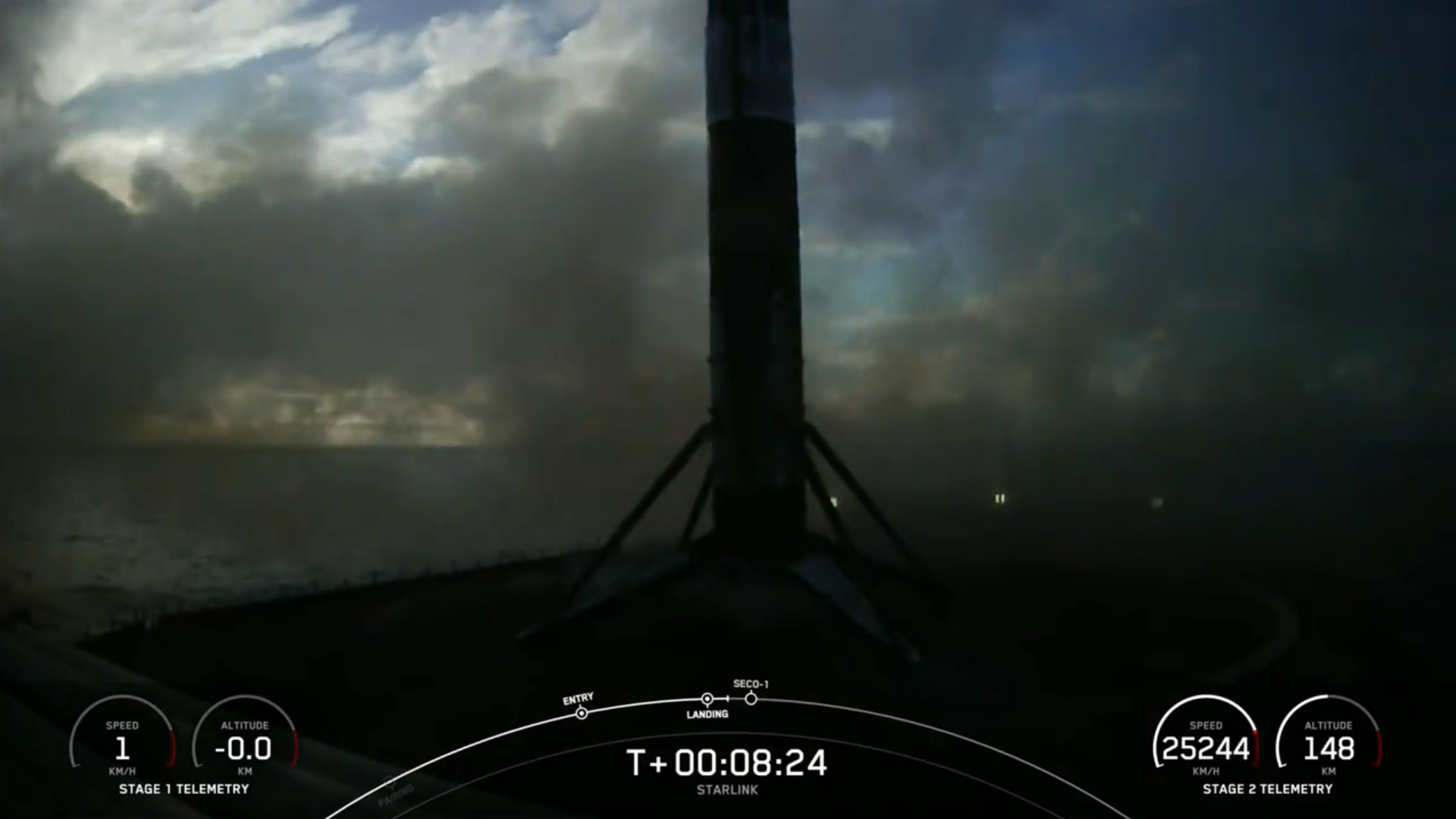
As a network, Starlink enables high-speed and low-latency internet provision across 70 sovereign nations and international markets in North and South America, Europe, Asia, Oceania and Africa. Landlocked Eswatini—formerly Swaziland—in southern Africa, together with Honduras and Paraguay joined Starlink in December.
January alone ended with seven Starlink-laden Falcon 9 missions from the East and West Coasts, including the deployment of SpaceX’s first six “Direct-to-Cell” satellites which permit mobile network providers to offer “seamless global access to texting, calling and browsing”, whether “on land, lakes or coastal waters”, without changing hardware or firmware. Last month, SpaceX teams sent and received their first text messages via Direct-to-Cell a mere six days after launch.
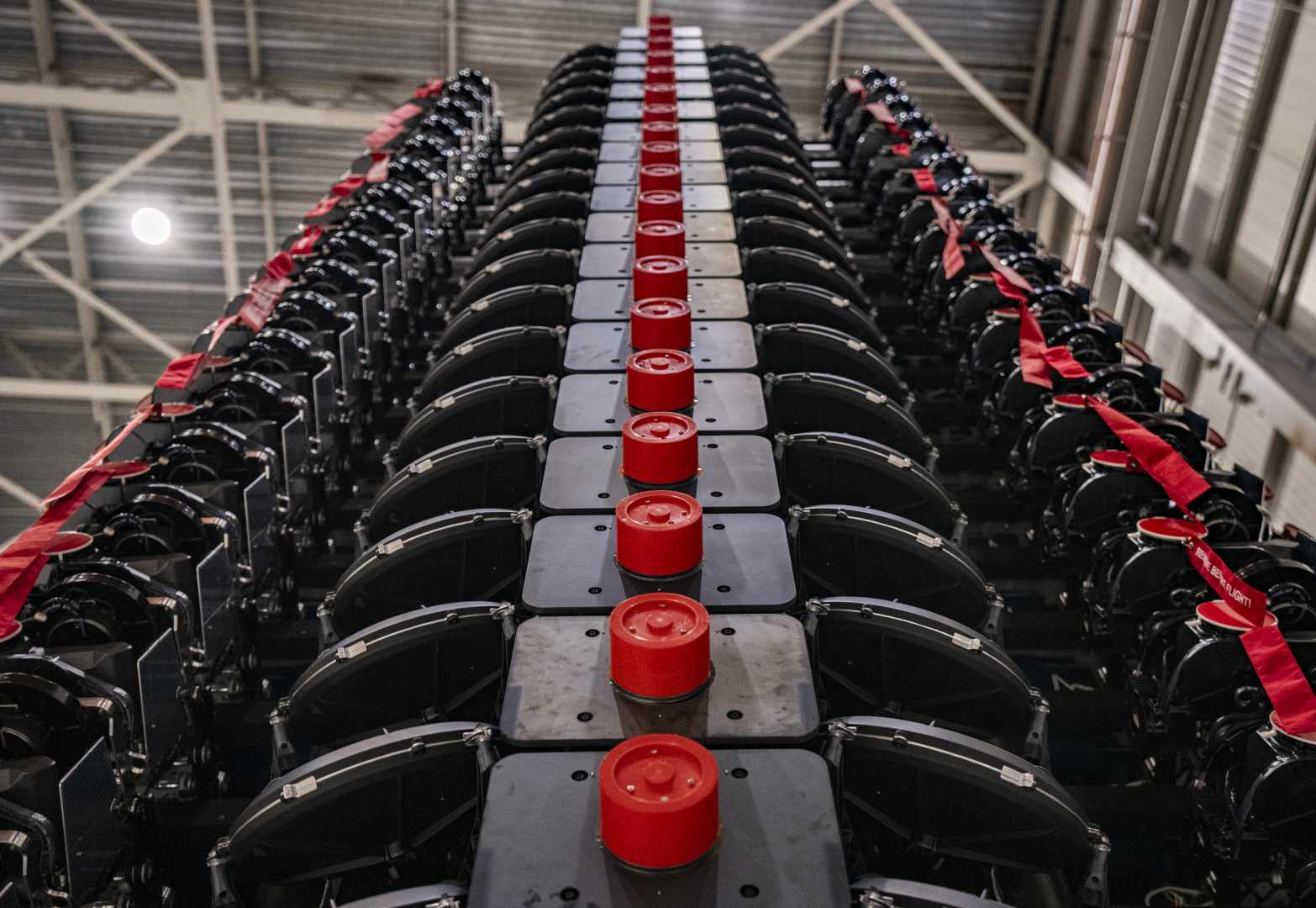
The downsized Starlink “V2 Mini” satellites, first flown in February of last year, boast three to four times greater “usable” bandwidth than earlier Starlink iterations. “V2 Minis include key technologies—such as more powerful phased-array antennas and the use of E-Band for backhaul—which will allow Starlink to provide 4x more capacity per satellite than earlier iterations,” SpaceX explained. “Among other enhancements, V2 Minis are equipped with new argon Hall thrusters for on-orbit maneuvering.”
Florida-based intercity operator Brightline adopted Starlink on its trains earlier in 2023, the first passenger rail service in the world to do so. Additionally, El Salvador’s Ministry of Education has begun integrating Starlink capability into its schools to help close the digital divide between urban and remote rural communities and 50 Rwandan schools are now connected via Starlink’s high-speed internet service.




